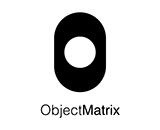Why Hybrid Makes Sense for Sports
Story Highlights
Sports-related content has always been in high demand, with dedicated sports fans eager to keep up with recent action or remember the good old days when their team was top of the pile. Aside from news footage, no other type of content is called upon to such an extent to dig out old clips and replays from the archives. Naturally this means that for sports broadcasters, it is more important than ever to be able to browse the content you own, then ensure it that can be accessed at any time to be shared with their loyal community. Can hybrid cloud make that achievable?
 The Evolution of Sports Video
The Evolution of Sports Video
Although it has always been popular, the demand and rights for sports video content has undergone massive changes over recent years. It used to be the case that only the largest broadcasters would have rights to air the most high-profile sports. That is changing. New entrants to broadcast are vying for and winning sporting rights. One fantastic example of this is Dazn, which has been rapidly gaining ground across the globe recently being called “The Netflix of Sports”.
Let’s face it, sports rights don’t come cheap, but the line-up at Dazn is pretty impressive for a relative new-comer to the market, so legacy broadcasters are having to work harder than ever to retain those sporting rights.
For the avid sports fans, this also means that they are having to subscribe to multiple subscriptions to keep up with all the action from their favourite sports. I can’t imagine consumers tolerating rising costs associated with multiple subscriptions but for some, the importance of being able to access sports content will outweigh the cost. So, what happens next? Maybe we will start to see it all get aggregated again but this time with new providers like Dazn, which is no doubt eyeing up even more sports rights in the future.
As the sports environment changes and competition increases, the way in which content is stored, edited, and shared, needs to change if broadcasters want to remain competitive and continue to monetize the content they have.
Increasing Engagement
One thing is clear: with this increased competition for sports rights, it is no longer enough to simply stream live coverage. The more engaging the sports coverage, the more loyal the fans will be. Therefore, broadcasters and other sports video content providers need to maximise the opportunities to keep fans engaged. This can range from delivering additional information about a team or players to Virtual Reality or Augmented Reality versions of live footage, making fans feel like they are in the arena when they can’t attend in person.
One of the most effective ways of keeping sports fans engaged actually lies in the archive. An often static and latent repository rich in content that is yet to be exploited, shared and celebrated.
This is where those providers which have been delivering sports content for some time may now have the upper hand. How many forms of broadcast content regularly demand replays of pivotal moments? In Wales, every single time our rugby team is about to play England, the local broadcasters dig out footage from our most famous victories. Digging those clips out is one thing if you know exactly when you will need them, but often this needs to be done at a moment’s notice, when something significant happens in a sports person’s career, for example. If the archive is not easily discoverable, that becomes challenging, if not impossible in some cases.
Sports production is happening on a much more global scale and with that broadcasters are beginning to embrace the cloud to more easily share that content. However, most sports broadcasters, especially those which have been producing content for a number of years, have huge volumes of content sitting on legacy LTO platforms that are not suited to today’s on demand environments. As those broadcasters look to move to more modern alternatives pubic cloud platforms are inevitably taken into consideration, and rightfully so.
Cloud provides very good data distribution and therefore at shared production workflows. It can be very cost effective in these situations. Some very interesting AI technology is also becoming available in the cloud paradigm. Cloud though also creates single-vendor and security concerns and has unpredictable cost models.
The reality today is that on-premises object storage infrastructure gives the greatest bandwidth possible, zero egress fees and can be significantly less expensive for many other workflows over 3 and 5 year periods. On-prem private cloud storage also links with all those incumbent workflows and software apps that have been invested in.
So which way to go? Can a hybrid approach really make a big difference to revolutionising the archive?
The Cloud for Sports
Cloud storage has a number of important benefits to enable this new generation of sports broadcast. For one thing, it enables access to content from anywhere, making global collaboration possible. However, it also comes with barriers. Especially for those with large legacy archives, it is hugely expensive for sports broadcasters and content providers to move every piece of footage to the cloud. Not to mention the massive infrastructure changes that entails.
Hybrid cloud gives sports broadcasters the best of both worlds, but if only done well. A truly integrated hybrid solution means they can use cloud for those items that need to be shared globally but still keep the legacy infrastructure on-premise. What is key however is ensuring the on-premise archive is discoverable and not sitting on tapes, for example. If properly integrated, the broadcaster should simply be able to access the entire archive from one place, regardless of whether in the cloud or on-premise, making those archived moments easy to find and share at a moment’s notice.
